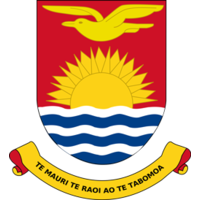Population and Housing Census 2020
Kiribati, 2020 - 2021
Get MicrodataIdentification
SPC_KIR_2020_PHC_v01_M
Population and Housing Census 2020
| Name | Country code |
|---|---|
| Kiribati | KIR |
Population and Housing Census [hh/popcen]
The national undertaking of the Population Censuses has been carried out in five year intervals by the NSO since 1985. In 1990, the full responsibility for the conduct of the census was vested under the direction of a local officer, namely, the Republic Statistician. Over time, a time series trend of the census data has been established and data from previous censuses are available dating back to 1921. The 2020 population census is the 14th population census in the series to be undertaken in Kiribati since the first census in 1921.
The primary objective of the Census is to determine the official count of the number of persons and households in Kiribati in 2020 and can be used to compare their socio-economic characteristics with those 5 years ago collected in the 2015 Population Census. Results of the census are most useful for government of Kiribati for planning and policy formulation and thus have a direct impact on the Kiribati population. These objectives of the Kiribati Census changed over time shifting from earlier years where they were essentially household registrations and counts, to now where a national population census stands supreme as the most valuable single source of statistical data for Kiribati.
Census data is now widely used to evaluate:
- The availability of basic household needs in key sectors, to identify disadvantaged areas and help set priorities for action plans;
- Benefits of development programmes in particular areas, such as literacy, employment and family planning;
In addition, census data is useful to asses manpower resources, identify areas of social concern and for the improvement in the social and economic status of women by giving more information and formulating housing policies and programmes and investment of development funds.
Census/enumeration data [cen]
Households and Individuals.
Version
Version 01: Cleaned, labelled and de-identified version of the Master file.
2021-06-02
Scope
-POPULATION: Individual characteristics, Population's relationship, marital status, religion, residence, origins, labour force, fertility, mortality, and migration, environment, health, education and literacy, and economic activity, communication and internet.
-HOUSING: Household characteristics, Living quarters and its conditions, water and electricity access, sanitation, waste disposal, energy, household durables and livestock & pets.
| Topic |
|---|
| pacific-skills, education, training pacific-skills, education, training |
| pacific-skills, industry, training |
| pacific-skills, occupation |
| pacific-skills, gender |
| pacific-skills, disability |
Coverage
National coverage. All 5 groups of islands were covered by the enumeration.
The universe of the 2020 Kiribati Census is all occupied households in Kiribati (private households and institutions). The census was conducted on a defacto basis.
Producers and sponsors
| Name | Affiliation |
|---|---|
| Kiribati National Statistics Office | Government of Kiribati |
| Name | Affiliation | Role |
|---|---|---|
| Statistics for Development Division | Pacific Community | Technical assistance |
| United Nations Population Fund | Pacific Community | Technical assistance and funding support |
| Name | Role |
|---|---|
| Government of Kiribati | Census donor |
| New Zealand Foreign Affairs and Trade | Census donor |
| Name | Role |
|---|---|
| United Nations Population Fund (UNFPA) | Technical support in Census |
Survey instrument
The questionnaire for this Census is composed of 8 sections and was published in English and iKiribati (local language).
The questionnaire was divided into 11 sections:
- GEOGRAPHICAL ID
- PERSON ROSTER: All individuals
- MODULE D: Education, Languages and Literacy
- MODULE E: Economic Activity Last Week
- MODULE F: Functioning Challenges & Social Behaviour
- MODULE G: Fertility and Mortality (Women Aged 15+)
- MODULE H: Communications and Internet
- MODULE I : Housing
- MODULE J: Agriculture, Fishing, Handicraft, Food Stock & Tourism
- MODULE K: ENVIRONMENT: energy, resources, prohibited fish consumption, trees.
- GPS + Photo.
The English questionnaire is provided as an external resource as part of this documentation.
Data collection
| Start | End | Cycle |
|---|---|---|
| 2020-11-07 | 2021-01-25 | Data collection |
| Name | Affiliation |
|---|---|
| Kiribati National Statistics Office | Ministry of Finance & Economic Development |
A total of 22 teams was in charge of iinterviewing households in Kiribati in 2020.
There were 153 supervisors for 462 interviewers that were disseminated throughout Kiribati.
There were both a listing and a pilot census prior to the census.
The census took place on the 7th of November2020.
The interviews were conducted both in English and Kiribati language to obtain precise answers. The average length of an interview was between 45 minutes and 1 hour depending on the size of the household (number of individuals in the household).
Data processing
Data was edited and cleaned using the software Stata version 15.
Data Access
| Name | Affiliation | URL |
|---|---|---|
| Kiribati National Statistics Office | Government of Kiribati | http://www.mfed.gov.ki/contact-us |
Licensed datasets.
"Kiribati National Statistics Office, Kiribati Population and Housing Census 2020 (PHC 2020), version 01 of the licensed datasets (June 2021), provided by the Pacific Data Hub - Microdata Library. https://microdata.pacificdata.org/index.php/home"
Disclaimer and copyrights
The user of the data acknowledges that the original collector of the data, the authorized distributor of the data, and the relevant funding agency bear no responsibility for use of the data or for interpretations or inferences based upon such uses.
Contacts
| Name | Affiliation | URL |
|---|---|---|
| Kiribati National Statistics Office | Government of Kiribati | http://nso.gov.ki/ |
Metadata production
DDI_SPC_KIR_2020_PHC_v01_M
| Name | Affiliation | Role |
|---|---|---|
| Statistics for Development Division | Pacific Community | Documentation of the study |
2020-12-23
Metadata version
-Version 01 (December 2020): This is the first attempt at documenting the Kiribati 2020 Population and Housing Census. Done by the Statistics for Development Division, Pacific Community.
